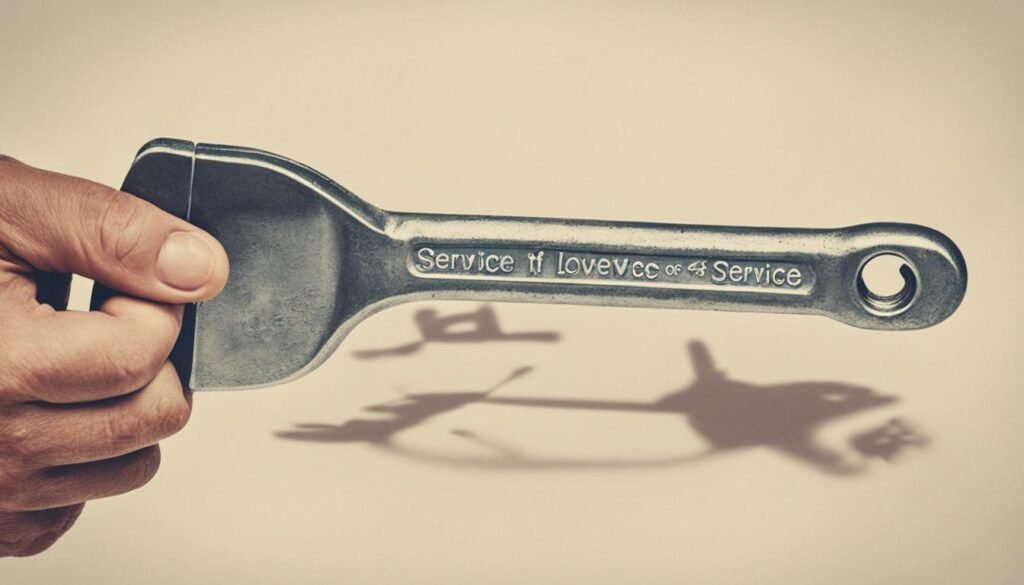Love is a complex emotion that can be expressed in many ways. While some partners feel loved through physical touch or quality time spent together, others prefer acts of service as their primary love language. Understanding these differences is crucial for building and maintaining a strong and healthy relationship.
In this article, we will dive deeper into acts of service, explore other love languages, and highlight the importance of identifying and respecting each other’s love language.
Key Takeaways
- Understanding different love languages is essential for building and maintaining a healthy relationship.
- Acts of service is one of the primary love languages that partners can express.
- Other love languages include quality time, words of affirmation, physical touch, and receiving gifts.
- Identifying and speaking each other’s love language can enhance the connection and foster love in relationships.
- The significance of recognizing and respecting different love languages in relationships cannot be overstated and should be a priority for all partners.
Understanding Acts of Service as a Love Language
Love can be expressed in many ways, and acts of service is one such way that signifies love for some individuals. Acts of service refer to those things that you do for your partner that make their lives easier. It could be anything from picking up the dry cleaning, cooking dinner, doing the dishes, or helping with a project at work. These are actions that demonstrate your love for your partner.
Acts of service are significant because they show that you are willing to put your partner’s needs before yours. They are considered a love language because some individuals feel most loved when their partner does things for them. Therefore, if acts of service are not received, they may feel unloved or uncared for.
It’s essential to recognize and understand your partner’s love language. There are various ways to do this, and one of them is by taking the love language test. This test helps you identify your primary love language, whether it’s acts of service or something else. It’s a helpful tool that can improve your relationship by allowing you to express love in the way your partner perceives it best.

Exploring Other Love Languages
Aside from acts of service, there are four other love languages that people tend to use to express love in romantic relationships. Understanding and speaking each other’s love language is crucial to building a strong and fulfilling connection. Let’s take a closer look at each of these love languages:
| Love Language | Description |
|---|---|
| Quality Time | This love language emphasizes spending undivided attention and time with your partner. It’s not just about physical presence, but also about being fully engaged and present in the moment. |
| Words of Affirmation | This love language involves expressing love and appreciation through verbal communication, such as using kind words, compliments, and expressions of admiration. |
| Physical Touch | This love language entails expressing affection through physical contact, such as holding hands, hugging, kissing, and other physical gestures of closeness. |
| Receiving Gifts | This love language involves showing affection through physical tokens of love, such as small gifts or thoughtful gestures that demonstrate love and appreciation. |
It’s important to note that each love language is unique and has its own set of actions that help express affection. While acts of service may involve doing things for your partner, quality time may require that you put away distractions and give your partner your full attention. Words of affirmation may involve vocalizing your love and appreciation, while physical touch may require more intimate physical contact. Finally, receiving gifts may mean giving small tokens of appreciation and thoughtfulness.
Understanding each other’s love language is key to maintaining a healthy and fulfilling relationship. Don’t underestimate the importance of expressing love in ways that your partner can understand and appreciate.

Conclusion
Understanding and speaking each other’s love language is crucial for maintaining a healthy and fulfilling relationship. While acts of service is a significant love language, it is essential to recognize and respect other love languages – quality time, words of affirmation, physical touch, and receiving gifts. Every individual has a different primary love language, and it is important to identify it using the love language test.
In conclusion, acts of service vs. other love languages is not a competition but a way to express love and foster connection. By recognizing and respecting each other’s love language, couples can deepen their understanding and appreciation of one another. So, take the time to learn your partner’s love language and speak it often to show them how much you care.
FAQ
What is the importance of understanding love languages in relationships?
Understanding love languages is crucial in relationships because it allows partners to communicate and express love in a way that is meaningful to the other person. It leads to better understanding, connection, and harmony in the relationship.
What are acts of service as a love language?
Acts of service is a love language where individuals express love by performing helpful actions and tasks for their partner. It can include actions like cooking a meal, doing household chores, or running errands to show care and support.
How can acts of service be expressed in a relationship?
Acts of service can be expressed in various ways, such as cooking a favorite meal for your partner, doing their laundry, helping with their workload, or taking care of a task they find stressful. It’s essential to understand your partner’s preferences and communicate openly to ensure your efforts align with their needs.
What is the love language test, and how can it help identify one’s primary love language?
The love language test is a tool developed by Dr. Gary Chapman that helps individuals identify their primary love language. It consists of a series of questions that assess how individuals prefer to receive love and affection. By taking the test, individuals can gain insight into their primary love language and communicate this with their partner, fostering a deeper understanding and connection.
What are the other love languages besides acts of service?
The other love languages include quality time, words of affirmation, physical touch, and receiving gifts. Quality time emphasizes spending meaningful, undivided attention with your partner. Words of affirmation involve expressing love through verbal compliments and encouragement. Physical touch emphasizes the importance of physical affection, such as hugs, kisses, or holding hands. Receiving gifts emphasizes the thoughtfulness and significance behind giving and receiving physical gifts as expressions of love.
How do the other love languages differ from acts of service?
While acts of service focus on doing things for your partner, the other love languages emphasize different means of expressing and receiving love. Quality time prioritizes shared experiences and undivided attention, words of affirmation focus on verbal expressions of love and praise, physical touch highlights the importance of physical affection, and receiving gifts values the gesture of thoughtful presents.
Why is it important to speak each other’s love language in a relationship?
Speaking each other’s love language is crucial in a relationship because it ensures that love is communicated and received in a meaningful way. It helps partners understand and fulfill each other’s emotional needs, fostering a deeper connection and a happier, healthier relationship.
How can acts of service and other love languages coexist in a relationship?
Acts of service and other love languages can coexist and overlap in a relationship. People can have multiple love languages, and understanding each other’s primary love languages can help partners express love more effectively. It’s important to communicate, listen, and adapt to each other’s needs, finding a balance that includes acts of service and the other love languages.
What is the key takeaway regarding acts of service vs. other love languages?
The key takeaway is that acts of service is a valid and valuable love language, but it is essential to understand and speak your partner’s primary love language as well. Recognizing and respecting each other’s love languages leads to a more fulfilling and harmonious relationship.

